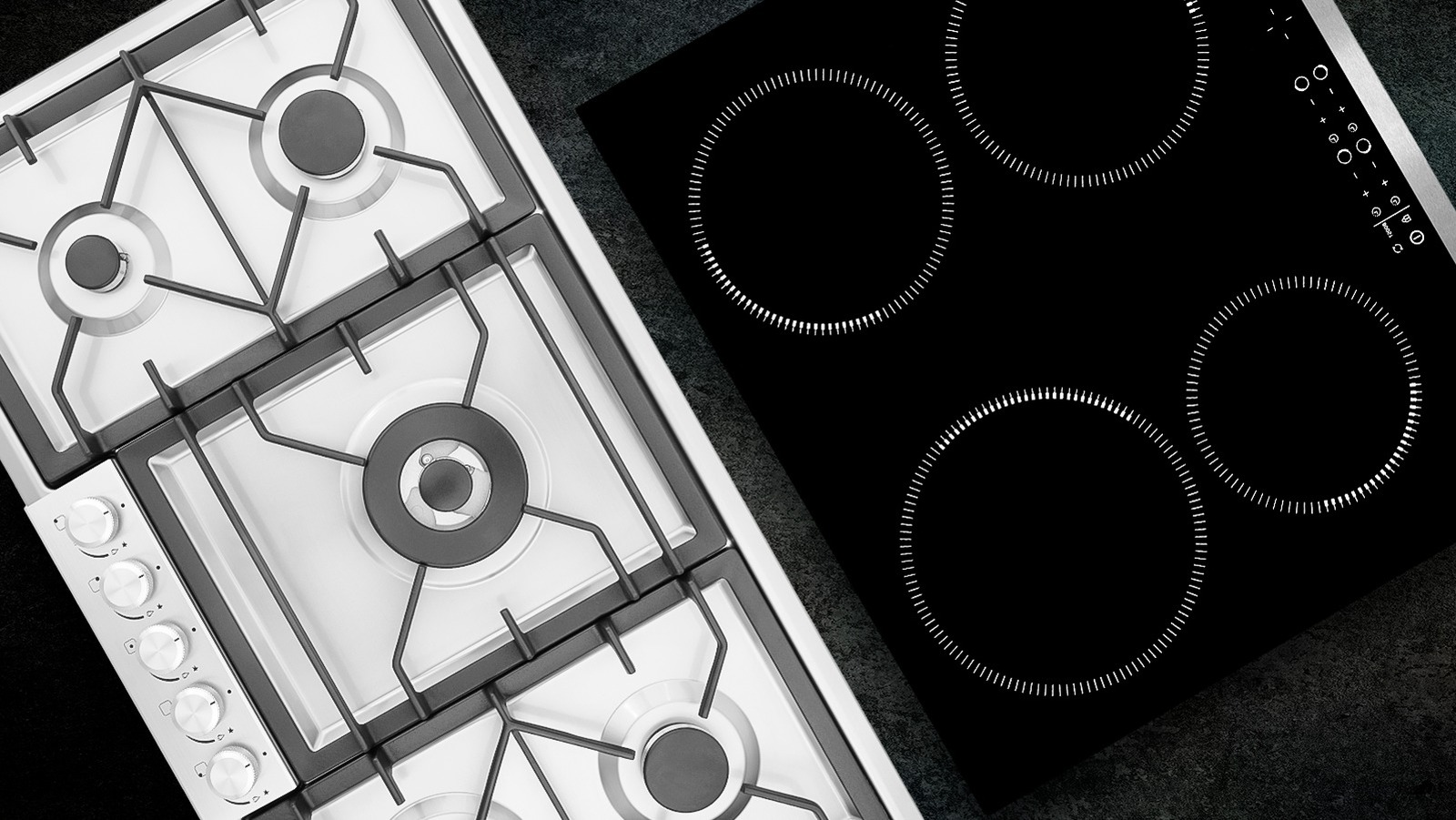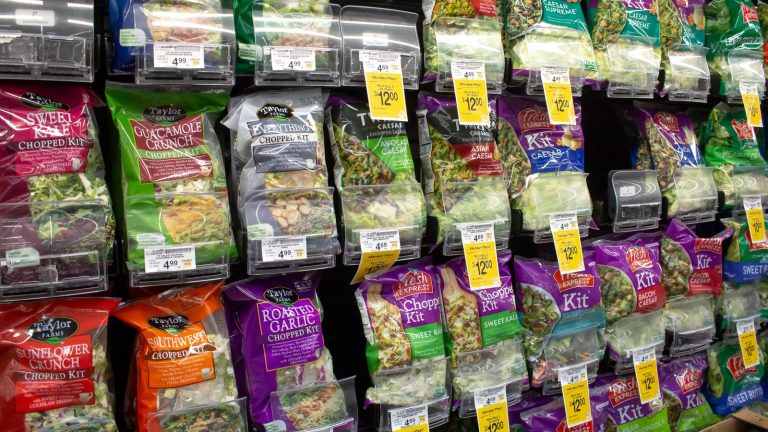Choosing new kitchen appliances has the potential to be both exciting and stressful. It’s fun to pick out something shiny and new that will not only enhance the look of your kitchen but will also improve the time you spend in it. However, weighing all the different options on the market and trying to make the best choice isn’t always easy. Things get even more complicated if you’re trying to determine whether a gas or electric stove is the best choice. You’ve probably heard reasons why each stove type is the “best,” along with reasons why each doesn’t cook well or could pose a safety hazard. So, how are you supposed to make the right decision?
To help you get the facts on gas and electric stoves, we reached out to four home and appliance experts to learn more. Glenn Lewis is the president of Mr. Appliance, a Neighborly company; Dennis Godynuk is a lead appliance expert at Comfort Appliance Repair in Tennessee; Mike Williams is the vice president of sales and marketing at Kenyon; and Kristina Zagame is the senior researcher in home electrification at EnergySage. Ahead, you can read through the information they shared exclusively with Tasting Table and use it to help you make the best decision for your kitchen. As Lewis advises, you’ll want to “consider your cooking habits, energy costs in your area, and whether your home is set up for gas, then balance performance, safety, and convenience.”
What is a gas range and how does it work?
Before you can decide if a gas range is the best choice for your kitchen, it is important to make sure that you understand exactly what this stove type is. “A gas range uses natural gas or propane to produce an open flame for cooking on a stove top burner,” explains Glenn Lewis. Dennis Godynuk shares some information about how these ranges work to heat and cook food. He says, “You turn the knob, gas flows out, and a little spark or flame lights it up. Next thing you know, you’ve got real fire heating your pan. It’s quick, easy, and you can actually see the heat you’re working with.”
If you have a gas range, then that means that the oven paired with it will also be gas-powered. Like the burner, this cavity is also heated by a flame, “but ignited by a glow bar for baking and roasting your food,” says Lewis.
Pros of gas ranges
Now that we have an overview of what a gas range is and how it works, let’s look at a brief overview of some of the benefits of cooking with gas. Dennis Godynuk says, “They’re great if you want control. You get heat right away, and it’s super easy to adjust.” Moreover, because the flame is providing the heat, as opposed to a burner or flat cooking surface, you should notice a more immediate change to the speed the ingredients in the pan are cooking. Similarly, Mike Williams shares, “Because the heat is immediately transferred to the cookware, there’s less energy loss and therefore usually considered to be more energy-efficient.”
Depending on where you live, Williams also says that your utility bills may be slightly lower when you cook with gas. This is because natural gas tends to cost less than electricity. If you lose power with an electric stove, there’s nothing you can do — it simply isn’t going to turn on or produce heat. With a gas stove, on the other hand, Godynuk says, “If the power goes out, you’re still good to cook.”
Cons of gas ranges
While there are several benefits to cooking on a gas stove, there are also some cons that you’ll want to consider before deciding whether this fuel source is right for you. With gas, there are some potential safety concerns. According to Glenn Lewis, you have to account for the “need for venting to control the release of CO2 into your home.” Mike Williams also highlights the possibility of a fire when cooking on a gas stove. “Maintenance is key for safety and efficiency — if not maintained properly, it can lead to a gas leak and gas-ignited fire,” he says. Williams shares that the National Fire Protection Association reports over 4,000 gas-related home fires each year, on average.
In addition to releasing CO2, gas stoves also release NO2 (nitrogen dioxide). NO2 can irritate the airway and respiratory system. Williams says, “Studies show that children living in homes with gas stoves have increased rates of asthma and asthma-like symptoms (wheezing, coughing, shortness of breath).”
If you don’t already have a gas line to your home, Glenn Lewis says that’s another downside you’ll want to consider. The cost to install a new line can be expensive.
What is an electric range and how does it work?
So, what about electric ranges? Before you can decide whether you should start shopping for one of the best electric ranges on the market, you’ll want to make sure you have a good understanding of what they are and how they work. “An electric range uses heating elements powered by electricity to generate heat, with either exposed coils or hidden coils to simmer, boil, bake, or roast your food,” shares Glenn Lewis. Unlike a gas stove, there is no open flame under the pots and pans. Instead, the coils deliver the heat to cook items. “It takes a little longer to heat up, and it also takes longer to cool down. But it’s pretty straightforward. You just turn the dial and wait a bit,” explains Dennis Godynuk.
The characteristics above describe traditional electric ranges. However, there is one other electric stove to consider: an induction cooktop. There is a key difference between induction and traditional electric stoves. As Mike Williams explains, an induction cooktop “uses electromagnetic fields to heat the cookware directly, rather than heating the cookware surface. This means faster heat-up times, precise temperature control, and a cooler cooktop surface for added safety and easy cleanup.”
Pros of electric ranges
There are a few pros of electric stoves that could help you determine whether one will offer the best cooking surface for your needs. First, there is no open flame. This may be a safer alternative if you have young kids or are worried about a loose piece of clothing accidentally catching on fire. Mike Williams also explains that adjusting the temperature on an electric range can be less of a guessing game. You can simply use the dial to adjust the burner temperature instead of trying to gauge based on the height of the flame. Dennis Godynuk also highlights the fact that electric ranges are typically easier to clean. Most current models have a flat, glass top, which you can simply wipe down. Godynuk also adds, “Electric stoves usually look a bit sleeker, especially the smooth-tops.” If you’re looking to design a modern kitchen, that sleek look could help you turn your vision into a reality.
If you’re thinking about an electric induction cooktop, it offers its own set of benefits, too. According to Mike Williams, induction ranges are more energy efficient because “there’s less heat loss because the burner heats the cookware directly, not the surface.” Williams also notes that induction cooktops heat more quickly and deliver more precise control than standard electric ranges. Plus, because they heat the cookware — not the cooktop — the surface remains cool to the touch. Kristina Zagame sees induction cooktops as a real game changer in the electric camp. She says, “Electric ranges used to get a bad rap for being slow, but induction stoves have changed the game: They’re faster, cleaner, and 90% more efficient than gas.”
Cons of electric ranges
There are also a few downsides to electric ranges to keep in mind. Let’s look at traditional electric stoves first. According to Dennis Godynuk, “They can be slower to heat up, and you don’t get that same instant control you do with gas.” Following some of the tips for cooking on an electric stove — such as moving a pan on and off a burner to manage the heat — can help you work around some of these downsides. Glenn Lewis also points out that they require more energy, so they have the potential to increase your electric bills.
Induction stoves also have some drawbacks. According to Mike Williams, they require a greater upfront investment. Plus, since they’re still an electric range, you will still need to pay for electricity to operate them. If you don’t currently have magnetic cookware (such as stainless steel or cast iron).
Gas stoves are generally better if temperature control is your main priority
If temperature control is one of your priorities when choosing a stove, then you may decide that gas is the best choice. While the burners on a traditional electric stove take a while to heat up (or cool back down when you realize that your sauce is bubbling too quickly), gas stoves respond much more quickly. As Dennis Godynuk shares, “You twist the knob, and you see the flame change instantly. It’s super responsive. So if you’re simmering a sauce or trying not to burn your eggs, gas gives you that quick on-the-fly control.”
If you want to have greater control over the temperature, but don’t like the idea of gas, then an induction cooktop might be the way to go. “Because they use electromagnetic energy to directly heat the cookware, you can immediately change the temperature precisely,” explains Mike Williams. He continues, “This makes them a great choice for delicate tasks like simmering or melting where precise, controlled heat is of utmost importance.”
The more consistent heat of an electric oven is better for bakers
While a gas stove is often preferred by professional chefs, professional bakers often opt for an electric range because of the benefits that electric ovens offer. While the temperature in a gas oven can fluctuate over the course of the cooking or baking time, electric ovens remain at a steadier temperature. Mike Williams explains, “Electric ovens are better for baking because they have a more even heat distribution so you have more consistent results in baked goods. They also tend to be a bit drier and have better temperature control.” You’ll likely find that your cakes, cookies, and other baked goods turn out best when baked in an electric oven.
However, there is a bit of a gas vs. electric oven debate between bakers and those who prefer cooking meats, veggies, and other dishes. “Gas ovens tend to have more moisture inside, which is nice for roasting meats so they don’t dry out,” explains Dennis Godynuk.
An electric range will probably be easier to clean
Keeping a kitchen clean can be a challenge. If you’re looking to avoid making it even more difficult, then you might want to opt for an electric stove. Mike Williams explains, “Generally, electric or induction cooktops are regarded as far easier to clean than gas ranges because the stovetops are smooth.” Once the surface is cool, you can simply wipe it down.
Cleaning a gas stove, on the other hand, is not so simple. Dennis Godynuk shares, “Gas stoves have grates and burner caps, and those need to be lifted and scrubbed now and then. Not a dealbreaker, but definitely a bit more effort.” Several people overlook key gas stove maintenance tasks, such as cleaning the burner channels. Because these are beneath the burner cap, it can be easy to forget. This just adds one more component to the already more difficult job of scrubbing the grates and burner caps.
A gas range will likely require a larger upfront investment
If your budget is going to play a large role in dictating which appliance is right for you, then you might find that electric ranges are the best choice. “Electric ranges are usually cheaper upfront, while gas ranges may cost more,” explains Glenn Lewis.
Beyond the initial purchase price, there are some other cost variables that you may want to use to guide your decision. “Once it’s in, gas can be more affordable to run, depending on local rates. So there’s a bit of a trade-off,” says Dennis Godynuk. While gas stoves may cost less to operate than a traditional electric stove, Mike Williams says, “Induction is generally regarded as the most energy efficient.” You’ll want to consider both your current budget and the potential utility costs to help guide your decision.
If your home isn’t already hooked up to gas, the extra costs might not be worth it
If your home isn’t hooked up to gas, then switching to a gas stove is going to be much more involved than simply buying a stove and putting it in the existing opening. You will likely need to have a gas line installed in your home. Without the fuel source, that gas stove isn’t going to be able to do anything. Mike Williams offers one alternative to a costly new gas line. He says, “You can also opt for a propane-powered stove. For this, they install a tank outside your home that you will need to periodically refill, but it’s usually cheaper than running a new gas line.”
Beyond the cost of the gas line or propane system, you’ll also need to account for the labor involved. This is not a task to try to DIY. As Williams says, “You want to make sure a licensed professional is doing the installation because gas does come with a possible safety risk.” Depending on your budget and how strongly you feel about getting a gas stove, you might decide that the added expense isn’t worth it.
Don’t overlook potential health and safety risks before making a final decision
Before you make a final decision about whether a gas or electric stove is right for you, you shouldn’t overlook the potential health and safety risks of cooking with gas. “With gas, you’re not just cooking dinner; you’re generating indoor air pollution that’s linked to asthma, lung disease, and even some cancers,” says Kristina Zagame.
If you decide you want to purchase a gas stove, Mike Williams stresses the importance of “mak[ing] sure to have carbon monoxide and gas leak detectors in the unlikely, but possible, event of a gas leak.” In addition to having the detectors, there is one additional step you can take to limit the amount of CO2 that is released into your home. Williams explains, “Plus, you do need to make sure you have proper ventilation with a range hood or ventilation system.” Your gas stove’s range hood plays a bigger role than you might expect. Without adequate ventilation, any CO2 that is released is going to remain in your indoor air, potentially accumulating to an unsafe level.
Consider the environmental impact of each stove type, too
“Cooking with gas isn’t just bad for your lungs — it’s bad for the planet. It burns methane, a potent greenhouse gas,” says Kristina Zagame. If you’re looking to reduce your carbon footprint, then opting for an electric stove that doesn’t release such dangerous gases into the air may be the best option for you.
Electric stoves generally present less of an environmental impact. However, as Glenn Lewis points out, you might want to do a bit of digging into how your electricity is supplied. He says, “If your electricity is supplied using renewable energy, it is more eco-friendly. If your electrical supplier uses coal or gas to fire their power plant, then no, gas and electric stoves are about equal on their environmental impact.” The ideal combination would be an electric stove (or even a more efficient induction stove) paired with solar panels or another source of renewable energy.
Serious chefs and bakers might want to consider a dual fuel range
What are you supposed to do if you can’t choose whether a gas or electric stove is best for you? Perhaps you really want to be in full control over the burner temperature, but also enjoy baking and want to take advantage of the benefits of choosing a drier, more evenly-heated electric stove? Well, good news: You don’t have to choose between just gas or electric. Instead, you can consider a dual-fuel range.
Mike Williams explains, “A dual-fuel range combines the best of both gas and electric ranges. In this case, you typically have a gas burner, good for quick adjustments in heat, with an electric oven, most usually a convection oven, so you get even heat distribution while baking or roasting.” Just keep in mind that you’re going to pay for this flexibility. Dual-fuel ranges are typically more expensive than either standard gas or electric models. You’ll also still need a gas line hookup in order to use them, so keep that in mind as you’re making your decision.





